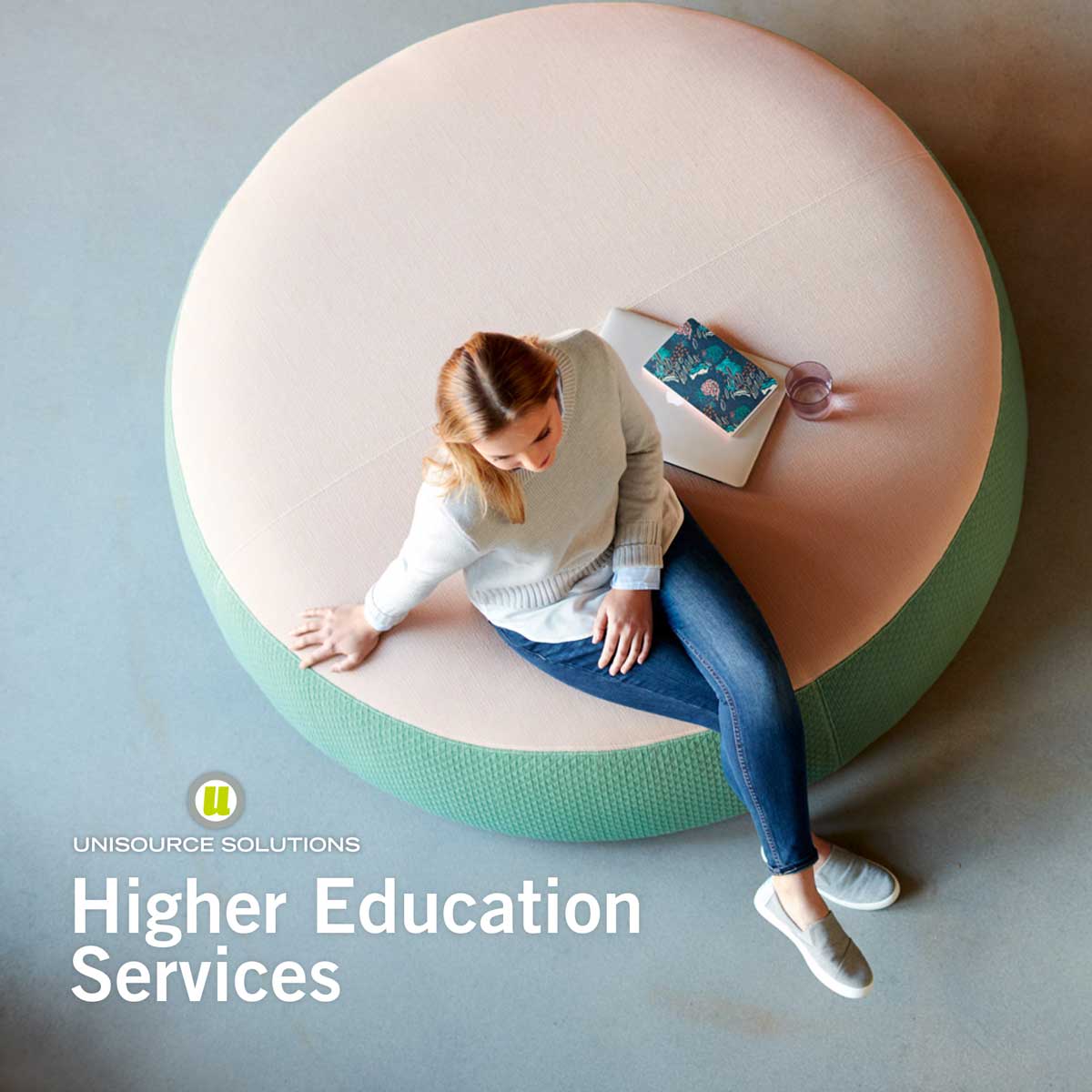Higher Education
Unlocking Potential in Higher Education
At Unisource Solutions, our expertise in design and furniture for higher education facilities comes from a deep understanding of the unique challenges and opportunities in these environments. We know that higher education spaces must meet the needs of students, faculty, and staff, and should be functional, inspiring, and adaptable.
Our team blends innovative design concepts with sustainable practices, ensuring each project reflects the institution's values and enhances the educational experience. We create tailored solutions that transform higher education spaces into vibrant environments for learning and engagement.
Some key considerations are essential to ensure a functional and supportive higher education environment include:
- Flexibility: The ability to easily adapt spaces for different purposes and collaborations.
- Collaboration: Design features that encourage teamwork and idea-sharing among students and faculty.
- Inclusivity: Ensuring spaces are accessible and welcoming to all individuals, regardless of their background or abilities.
- Technology Integration: Seamless incorporation of modern technologies to enhance teaching and learning experiences.
- Ergonomics: Designing workplaces that prioritize comfort and health to improve well-being.
- Community: Fostering social interactions and a sense of belonging among faculty, staff, and students.
- Sustainability: Implementing environmentally friendly practices in the development and maintenance of educational spaces.

DOWNLOAD
Higher Education Lookbook
Ideas and inspiration for creating collaborative spaces, learning spaces, technology infrastructure, student life spaces, and environmentally friendly spaces.
Designing for Students
Designing higher education spaces with students in mind is crucial for fostering an effective learning atmosphere. Creating flexible environments that encourage collaboration and engagement is essential. Features like movable furniture, interactive technology, and designated zones for quiet study and group work can greatly enhance the educational experience. By prioritizing student comfort and accessibility, spaces can become inclusive areas that support different learning styles and promote academic success. Incorporating natural light, greenery, and vibrant colors further elevates the appeal, making these environments functional and inviting for all learners.
Designing for Faculty
Faculty offices and communal spaces should promote interaction and idea exchange while providing a personal retreat for focused work. Incorporating elements such as adjustable workstations, collaborative meeting rooms, and technology-rich environments enables faculty to engage effectively with students and colleagues. It is also essential to include areas dedicated to professional development and informal gatherings, allowing for community-building and networking.
Thoughtfully designed faculty lounges, complete with comfortable seating and areas for informal discussions, can enhance job satisfaction and well-being, ultimately contributing to a more vibrant academic culture. By prioritizing these design principles, higher education institutions can create supportive environments that empower faculty to thrive and inspire their students.

Designing for Employees
Non-faculty employees and staff in higher education institutions require facilities and spaces designed to foster a productive and supportive work environment. These spaces must accommodate various roles, from administrative tasks to maintenance and support services, ensuring that each area is tailored to its specific function.
Incorporating flexible workstations, private offices, and collaborative areas can enhance communication and teamwork among staff while also providing the privacy needed for focused tasks. Additionally, considering the well-being of employees through features like natural light, ergonomic furniture, and social spaces for relaxation promotes job satisfaction and reduces stress.

Creating Hybrid Educational Environments
As hybrid educational models have become the norm, designing spaces that seamlessly integrate in-person and remote learning experiences becomes increasingly vital. These environments must provide the flexibility to accommodate various teaching methods and learner interactions, fostering collaboration regardless of location. Thoughtful incorporation of technology, such as high-quality video conferencing tools and interactive digital whiteboards, can enhance engagement and connectivity for both on-site and online participants.
Additionally, creating versatile furniture arrangements that support both individual and group work allows educators to adapt their teaching styles to meet evolving needs. Ultimately, hybrid educational environments should be designed to promote inclusivity and engagement, ensuring that all students, whether in the classroom or from afar, have equal access to resources and opportunities for participation.
